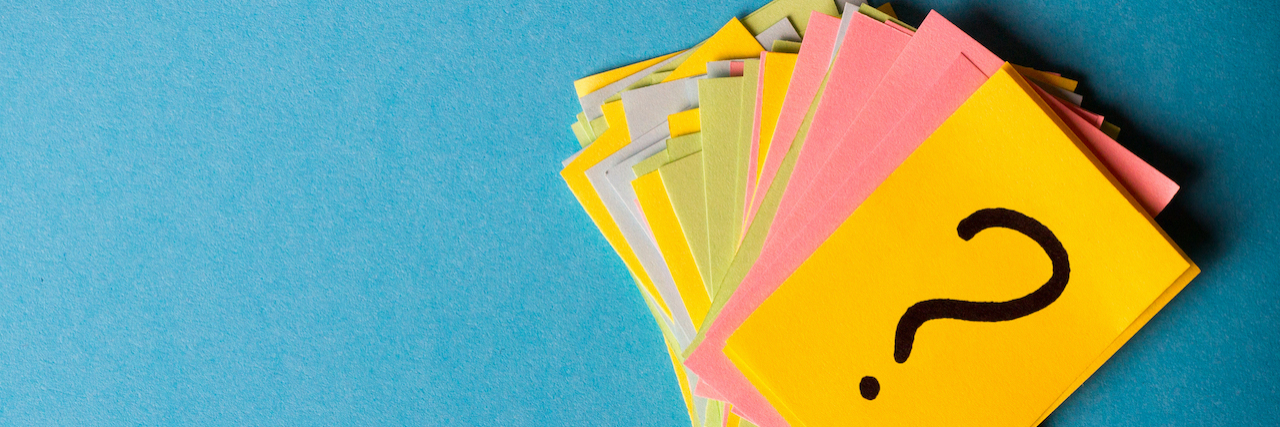6 Ways to Increase Tolerance for Uncertainty and Help Manage Your Anxiety
Anxiety Canada is presenting town hall meetings each week on guess what topic? Anxiety! And boy, the one I recently watched titled “Uncertainty during COVID-19” was so helpful!
Knowledge is power they say. Getting accurate information about anxiety, how it works and the tips to increase “uncertainty tolerance” was anxiety-reducing in itself.
Many people are feeling more anxious than usual. A pretty natural response to a global pandemic, I’d say. For those of us with generalized anxiety disorder (GAD), like myself, or other anxiety disorders, these times can be even more challenging. I know they have been for me.
Psychology Today describes generalized anxiety disorder (GAD) as a “chronic state of severe worry and tension, often without provocation. Those with GAD regularly anticipate disaster, often worrying excessively about health, money, family, or work. Merely getting through the day brings on anxiety.” Sounds comfy huh? Not.
Research tells us that people with GAD have difficulty tolerating uncertainty. In Anxiety Canada’s video, psychologist Dr. Melisa Robichaud, explains “intolerance of uncertainty means the person with GAD will worry about an imagined feared event as long as there is even the slightest risk of it happening.”
Most people are a little uncomfortable with uncertainty. There’s nothing wrong with that. But being very uncomfortable with it, is problematic. It can lead to extreme levels of stress, anxiety and worry as well as time-consuming behaviors.
Increasing our ability to tolerate uncertainty can go a long way to helping us feel more at ease when things are stressful. This is the case whether you have an anxiety disorder or not.
Robichaud continues, “uncertainty is a component of a situation where you can’t predict the outcome which is great fodder for anxiety and worry.”
It’s important to differentiate. Worry is of the mind (those negative what if’s that roll around in our heads). Anxiety is of the body (racing heart, shortness of breath, the physical feelings we get).
In my personal experience of GAD, difficulty tolerating uncertainty drives my worry.
In general, this is how it works for most people. Dr. Robichaud says “worry is a mental attempt to reduce the unknown and feel more certain by thinking through anything that could possibly happen.” Unfortunately, complete certainty is always out of reach and this feeds the relentless cycle of anxiety and worry.
Recognize any of these behaviors? To feel more certain, do you:
- ask for reassurance from others a lot?
- get 2nd, 3rd, 9th opinions on things?
- do unending research and information-gathering?
- worry about negative events happening even if the likelihood is low?
- make lists upon lists, maybe making multiple ones in a day?
On my “not-so-good-filled-with-worry” days, yes I do. These and other thoughts and behaviors indicate an intolerance of uncertainty.
There’s actually an assessment to measure it. It’s called, what else? The Intolerance of Uncertainty Scale (the IUS)!
Even though we will always live with uncertainty, there is good news. There are ways we can improve our ability to tolerate it and thus increase our everyday sense of ease.
6 Ways to Increase Tolerance for Uncertainty:
1. Acknowledge and accept
First, it’s OK to be anxious about the current uncertain times. It’s not just OK, it’s understandable. Even without the pandemic, anxiety is OK. Yes — it’s uncomfortable, but it is also acceptable. Accept and acknowledge it’s natural to feel anxious — you’re not alone. This in and of itself can create space to relax.
In the video above, clinical psychologist Dr. Anne Marie Albano suggests we recognize and accept “we can’t (ever) be completely certain, but we can do the best we can, for who we are. You do what you can to take care of yourself and to make (positive) outcomes more likely.”
2. Knowledge
Education is powerful. Learning about uncertainty tolerance and understanding how anxiety works can improve our ability to tolerate uncertainty. Watching the video and reading this post can increase our understanding and decrease our anxiety.
3. Flexible thinking
As Dr. Anne Marie Albano describes, it is learning to “roll with things when you can’t control them. The ability to make good use of accurate information.” Shifting our thinking when we get new information and allowing that to positively influence our behavior is what developing flexibility in our thinking is all about.
4. Create a healthy relationship to threat
Dr. Robichaud explains “a healthy relationship to threat (or uncertainty) is based on probability not possibility.” That is, I use my rational mind, not my anxious mind, to determine the likelihood of an event occurring. If it’s a low probability that it will happen, then, in Dr. Robichaud’s words, “I will not act as if it is a threat.”
5. Strategically gather information
Determine if the information gathering is helping and actually informing or is it another sneaky form of seeking reassurance? If it’s an attempt to find reassurance, then choose to stop. Intentionally choose when to gather information, and where to get it. That is healthy control.
6. Problem solve from the rational mind
When there is a concrete issue (for example, job uncertainty), problem solve. Create a healthy plan using your rational mind not anxious mind.
Dr. Robichaud describes a “wait and see” approach. If you make a plan when you’re anxious, wait until the next day and review it. If it really is a good idea, it will still be a good one the following day when you’re less anxious.
One of my favorite psychiatrists said to me “life is learning to live with uncertainty without being paralyzed by fear.” Uncertainty in life is unavoidable. The pandemic highlights this in neon. There are a lot of things in life that are out of our control. Fortunately, the way we choose to respond and relate to the unknown isn’t one of them.
Getty image by Mykola Sosiukin


